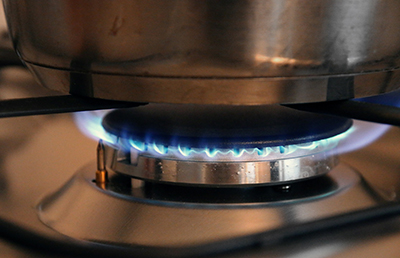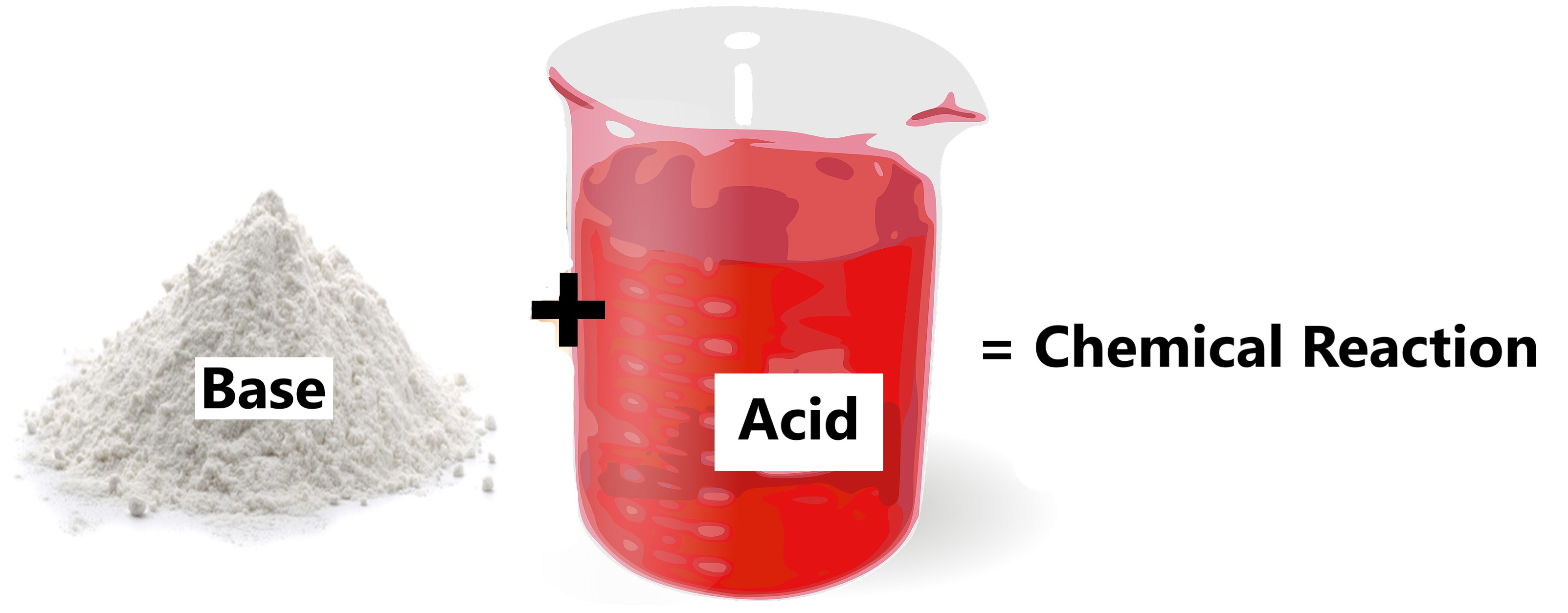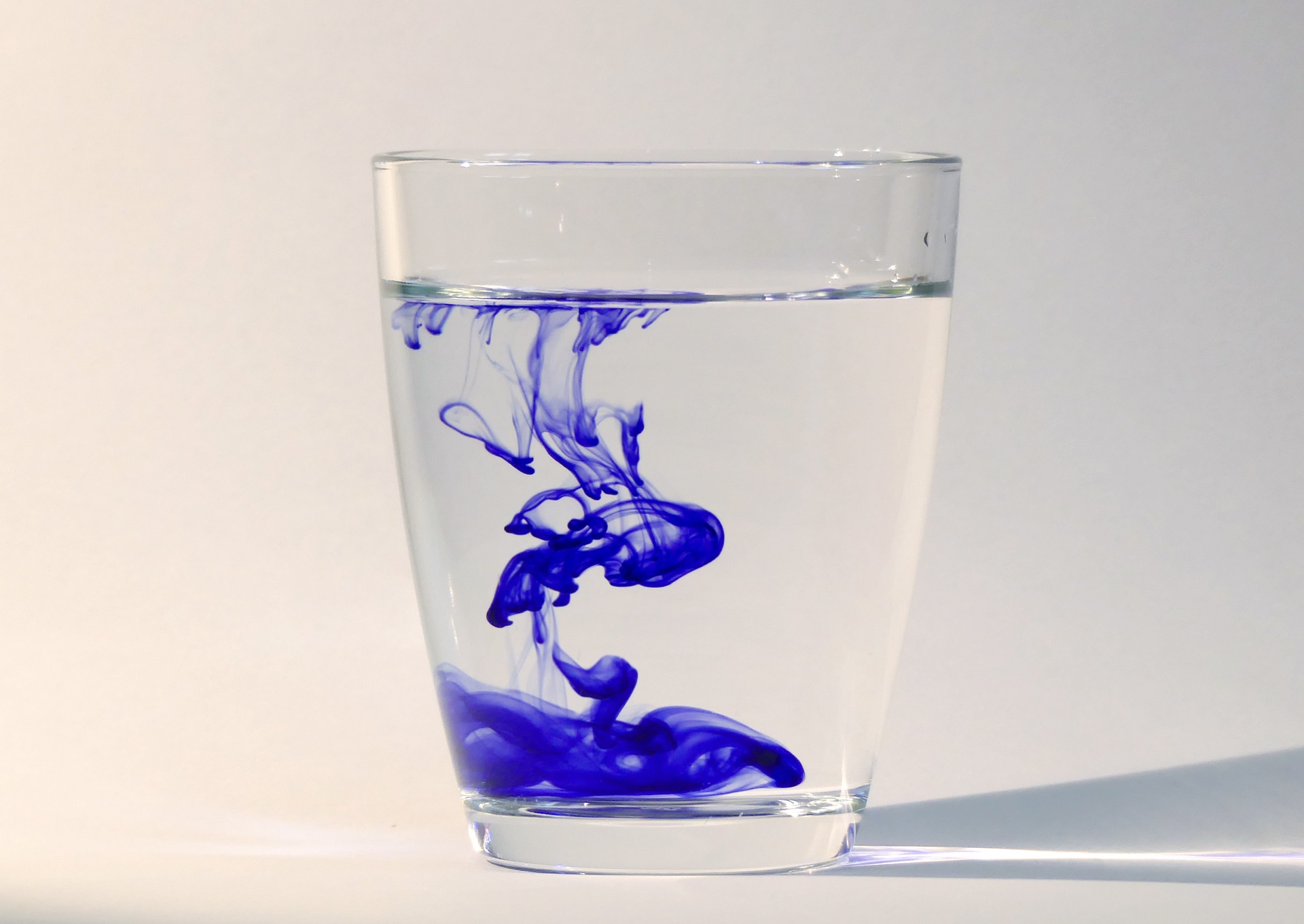

Types of processes (or reactions). In your everyday life, you have seen many different kinds of natural processes. You've probably watched water boil, observed substances spread throughout water, like when you add food coloring to water or make Kool Aid or tea. Or you may have been impressed with "explosions" that result from combining different substances, such as mentos mints and soda/pop or vinegar and baking soda.

We can categorize these processes as either chemical processes or physical processes. The difference between chemical and physical processes is whether new substances are formed during the reaction process.
**The key difference between physical and chemical processes: In chemical processes, new substances are formed. But in physical processes, the substances remain the same.
We'll talk more about this in the next few pages...
What are chemical vs. physical processes? In chemical processes, molecules break apart into atoms. The atoms re-combine with other atoms to form different molecules. But in physical processes, the molecules do not change. For example, a molecule of water is H2O. It has two Hydrogen atoms and one Oxygen atom. In the physical processes of freezing or boiling, the water molecules remain H2O. The Hydrogen and Oxygen atoms stay together.
Signs of a possible chemical reaction include a change in color after the reaction. With a physical reaction, you may see a change in shape (such as when water freezes from a liquid into solid ice). But these signs are just general "rules of thumb" and there are exceptions.
Chemical processes or chemical reactions. In a chemical process, the original substances react with each other to form new substances. The new substances are made of different types of molecules from the original substances.
Let's look at two examples of chemical reactions:

Example #1: When someone cooks on a gas stove, methane gas and oxygen react with each other to make the flame we see on the stove. (This is shown in the picture above.) Methane and oxygen react to produce two different types of molecules: carbon dioxide and water. This reaction is shown below:
Since the products of the reaction (carbon dioxide and water) are different from the reactants (methane and oxygen), this is a chemical reaction.
In this reaction, the CH4 (methane) molecule breaks apart into one C (carbon) and four H (hydrogen) atoms:
The C atom joins with two O (oxygen) atoms to form a new molecule, CO2 (carbon dioxide):
Also during the reaction, each pair of hydrogen atoms joins one of the other two oxygen atoms, forming two molecules of water (H2O):
This can be written as:
Chemical processes/reactions. We just talked about how the gas we use to cook foods chemically reacts with oxygen to produce new molecules. But often, the food we cook itself undergoes chemical reactions when it is heated. In fact, cooking foods increases the calorie content of the foods that are high in starch (like rice) and proteins (like meats).

The discovery of fire and cooking by early humans actually led to freeing up their time from hunting and gathering to discover other things, since they didn't need as much food to survive! It also led to smaller jaw muscles, which allowed more room for their brains. So, the chemical process of cooking actually helped humans to become among the smartest animals on earth!
Chemical processes/reactions. Any time you mix an acid with a base, a chemical reaction occurs. These reactions produce a salt and water.

Example #2. If you mix hydrochloric acid (HCl), which of course is an acid, and sodium hydroxide (NaOH), which is a base, they react with each other and produce two different substances. These new substances are sodium chloride (NaCl), which is common table salt, and water (H2O).
This reaction is shown below:
The products of the reaction, NaCl (common table salt) and water, are different molecules than HCl and NaOH. So, this is another chemical reaction.
During this reaction, the HCl molecule breaks apart into H and Cl atoms. The NaOH molecule breaks apart into Na, O, and H:
The Na and Cl atoms join to form NaCl:
Also, the H atom joins the O and H to form H2O:
Conservation of matter in chemical reactions
Questions: What happens to the atoms that make up molecules during chemical reactions? (Q1) Are there the same total numbers of atoms before and after reactions? (Q2) Are there the same numbers of each type of atom (or element) before and after the reaction?
(Q1) First, let's look at this example to see if there are the same number of atoms before and after the reaction.
Before the reaction, there were 5 atoms: 1 H atom, 1 Cl atom, 1 Na atom, 1 O atom, and 1 H atom.
After the reaction, there are also 5 atoms: 1 Na atom, 1 Cl atom, 2 H atoms, and 1 O atom.
Conservation of matter in chemical reactions
(Q2) Now let's look at this example to see if there are the same number of each type of element (H, Cl, Na, O) before and after the reaction.
Starting with H:
For Cl:
For Na:
Finally, for O:
How can you tell if a reaction is physical or chemical? It may be hard to tell for sure if a reaction is a chemical or physical reaction. But here are some general "rules of thumb" that let you know that a chemical reaction may have occurred:
The products of the reaction are different colors than any of the initial reactants. (Not just lighter or darker shades of the original color.)

These are all just general "rules of thumb" for whether a reaction is chemical or physical, and there are exceptions. The only way to know for sure if a chemical or physical reaction has happened is if you somehow know that the molecules change during the reaction!
Having x-ray vision would help.
Physical processes. Unlike chemical processes, the atoms or molecules that make up the original substances remain the same in a physical process. They don’t change into different molecules like in a chemical reaction.
When substances change their state of matter (for example, change from a solid to a liquid or from a liquid to a gas) their molecules remain the same. So, state changes are physical processes.
The picture below shows water (H2O) in its solid, liquid, and gas states. In each state, the water molecule remains H2O. That is, ice is made of H2O molecules, liquid water is made of H2O molecules, and water vapor is made of H2O molecules.
H2O molecules do not change when liquid water freezes into ice or evaporates into water vapor. H2O molecules do not change when ice melts into water or when water vapor condenses to liquid or solid. So, freezing, evaporating, melting, and condensing are all physical processes. In general, when any substance (not just water) changes state, this is a physical process.
Three states of Matter (Solid, Liquid, and Gas)

Important Note: An important point is that we can't see a substance in its gas form. The picture of "gas" to the right here actually shows gaseous water vapor cooling and condensing to a liquid or solid form (which we are able to see, because the molecules are more densely packed). Similarly, we can only see clouds because the water vapor (H2O in a gas form) has condensed into liquid or even a solid as it has cooled.
Dissolving. The process of a substance dissolving into a liquid (often, water) may either be a chemical or physical reaction. This depends on what happens to the substance that is dissolving.
(See the unit on dissolving for more information.)
Conservation of matter in chemical and physical processes. In both chemical and physical reactions, the total number of atoms that existed before the reaction is the same as the total number of atoms after the reaction.
Also, in both chemical and physical reaction, the total number of each type of atom (or each element) is the same before and after the reaction. So, for example, if there were 5 Hydrogen (H) atoms before a chemical or physical reaction occurs, there must be 5 H atoms after the reaction. If there were 100 atoms of Carbon before the reaction, there must be 100 atoms of Carbon after the reaction.
We can say that matter is "conserved" during all physical and chemical processes. This means that no new matter is made or destroyed during physical or chemical processes. This is the principle of conservation of matter.